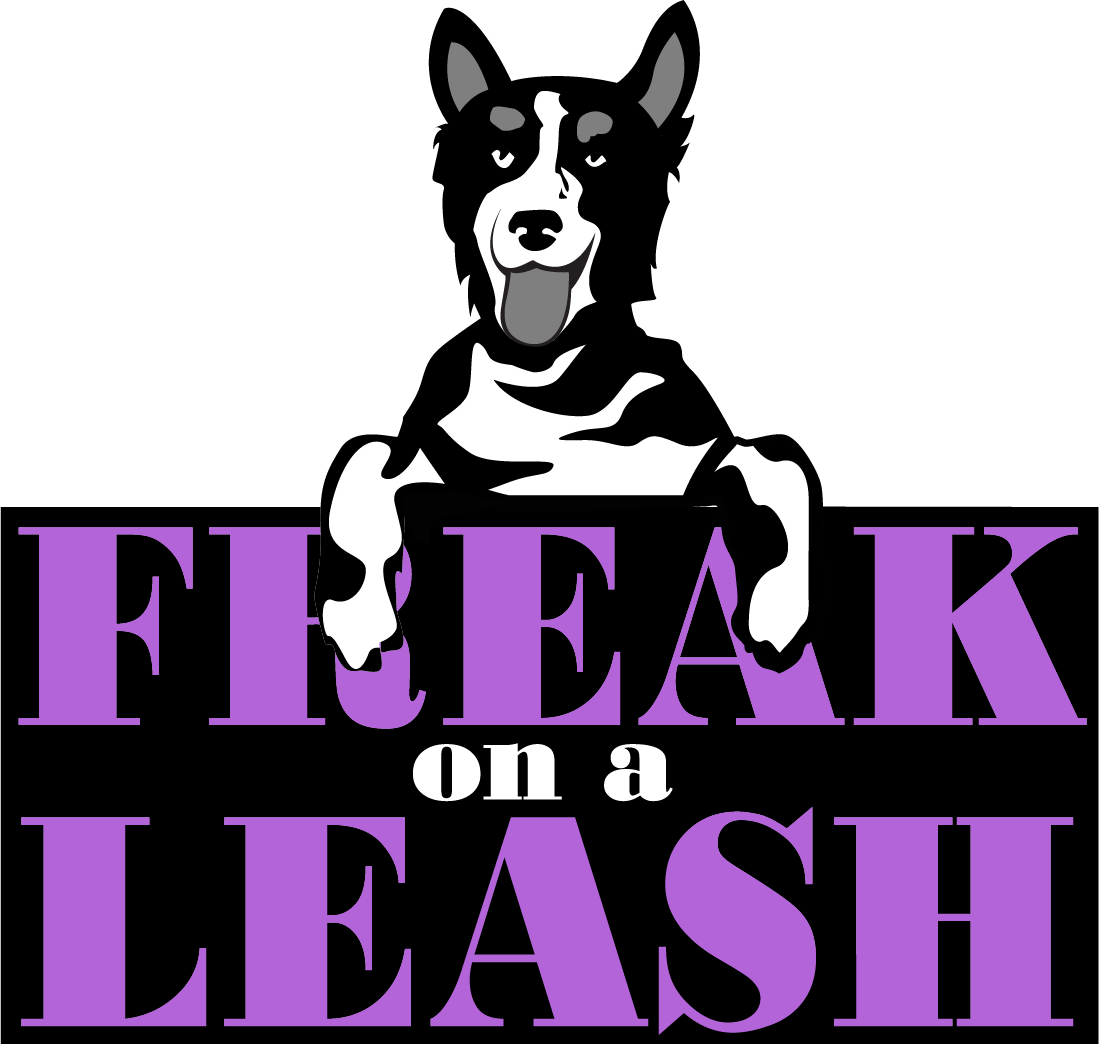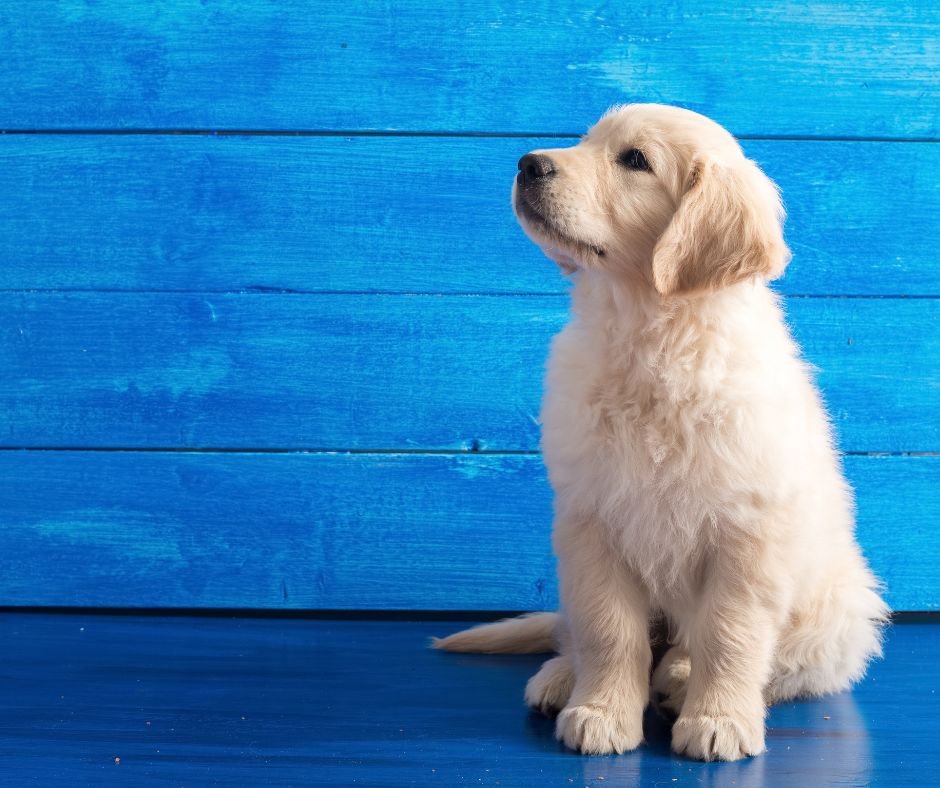House training a puppy can be a challenging part of raising a happy and well-behaved pet. It is a process that requires time, patience, and consistency. As a new puppy owner, it is important to understand the common mistakes to avoid when house training your new companion. By being aware of these mistakes, you can set yourself and your puppy up for success in this important training journey.
The Best Time to Start House Training a Puppy
When it comes to house training a puppy, timing is everything. The right time to start house training is when your puppy is young and receptive to learning. Generally, puppies between 12 to 16 weeks old are more adaptable to new routines and can quickly learn the rules of potty training. During this time, a puppy’s bladder and bowel control are still developing, making it easier for them to grasp the concept of house training. However, it’s important to note that the ideal age for house training may vary depending on breed and each individual puppy.
Understanding Your Puppy’s Developmental Stage
Understanding your puppy’s developmental stage is crucial when it comes to house training. Puppies go through various growth stages, each with its own set of challenges and training needs. For the first few weeks of their lives, puppies rely on their mother for everything, including bathroom habits. As they grow, they begin to develop more control over their bladder and bowels. By 3 weeks of age, puppies start venturing away from their sleeping area to eliminate, marking the beginning of the house training process.
Between the ages of 4 to 16 weeks, puppies are still developing bladder and bowel control. During this time, they may have a very short time between being aware of their need to eliminate and actually doing so. It’s important to be vigilant and provide frequent potty breaks during this stage to avoid accidents indoors. As puppies reach the 12 to 16-week mark bladder control improves, making it easier for them to hold their urine for longer periods and understand the concept of house training.
The Ideal Age for House Training
As previously stated, the ideal age to start house training your puppy depends on several factors, including breed, individual temperament, and the puppy’s previous living environment. Generally, anywhere between 12 to 16 weeks of age is an ideal time to begin the house training process. By this time, most puppies have developed sufficient bladder control to hold their urine for a longer duration, making the training process more effective.
When starting house training, it’s important to set a routine and be consistent. Establish a regular feeding schedule that aligns with your puppy’s bathroom needs. Puppies usually need to potty shortly after eating, so taking your puppy outside or to a designated potty spot at regular times throughout the day will help reinforce desired bathroom habits. Additionally, providing plenty of positive reinforcement, such as treats and praise, when your puppy eliminates in the right spot will further encourage their understanding of the house training process.
By starting house training at the right age and implementing consistent training techniques, you can set your puppy up for success and establish good bathroom habits that will last a lifetime. However, it’s important to remember that every puppy is unique, and the time it takes to fully house train may vary. Patience, consistency, and positive reinforcement are the keys to successfully house training your puppy.
Different Techniques of Puppy House Training
There are several different techniques you can use to house train your puppy, each with its own advantages and considerations. The most common house training techniques include crate training, paper training, and bell training.
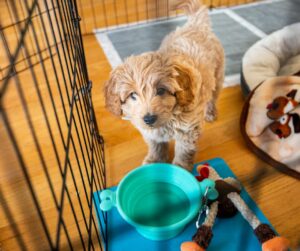 Crate Training Method
Crate Training Method
Crate training is a popular and effective method for house training puppies. Here are the key points to remember when crate training your puppy:
- Choose the right size crate: Your puppy’s crate should be big enough for them to stand, turn around, and lie down comfortably, but not so big that they have space to eliminate in one corner and sleep in another. The crate should offer a safe and cozy space for your puppy to relax.
- Establish a routine: Set a regular schedule for potty breaks, feeding, playtime, and crate time. Consistency in the routine will help your puppy understand what is expected of them.
- Use positive reinforcement: Encourage your puppy to view the crate as a positive space by providing treats, toys, and praise when they enter the crate willingly. Make the crate a place of comfort and security for your puppy.
- Supervision and consistency: When first starting crate training, it’s important to supervise your puppy closely to prevent accidents. Gradually increase the amount of time your puppy spends in the crate, ensuring they have regular potty breaks throughout the day.
- Potty break schedule: Take your puppy outside or to their designated potty area immediately after they are released from the crate. This will help associate leaving the crate with the need to eliminate, which will help your puppy potty on a schedule and reinforce good bathroom habits.
Overall, crate training can provide your puppy with a safe space and aid in the house training process. Remember to make the crate a positive and comfortable environment, establish a routine, and provide regular opportunities for potty breaks.
Paper Training Method
Another commonly used house training method is paper training, which is particularly helpful for puppies with limited outdoor access. Here are the key points to remember when paper training your puppy:
- Designate a specific area: Choose a specific area in your living space for paper training, ideally away from your puppy’s sleeping and eating areas.
- Layer the area with newspaper or puppy pads: Place several layers of newspaper or puppy pads in the designated area, making sure to cover a sufficient area for your puppy to eliminate comfortably.
- Introduce consistent cues: Use a consistent verbal cue, such as “go potty,” when taking your puppy to the paper training area. This will help them associate the cue with the act of eliminating.
- Monitor and reward: Keep a close eye on your puppy’s behavior and take them to the paper training area when they show signs of needing to eliminate. When your puppy eliminates on the paper, provide immediate praise and rewards to reinforce the behavior.
- Gradual phase-out: As your puppy becomes more reliable with paper training, gradually reduce the size of the papered area, encouraging them to eliminate in a smaller, more specific spot.
Paper training can be effective for puppies, especially those in apartments or homes without easy access to outdoor space. However, it’s important to note that starting with paper training may add additional time and effort to transition your puppy to outdoor bathroom habits.
Bell Training Method
Bell training is a unique and useful method for teaching puppies to communicate when they need to go outside to potty. Here are the key points to remember when bell training your puppy:
- Choose a bell and hang it near the door: Select a bell that is easily accessible to your puppy and hang it low enough for them to reach with their nose or paws.
- Introduce the bell during potty breaks: Every time you take your puppy outside, encourage them to touch the bell with their nose or paws before opening the door. This will help them associate the bell with going outside to potty.
- Positive reinforcement: When your puppy touches the bell, immediately open the door and take them to their potty spot. Praise and reward your puppy when they eliminate in the right spot, reinforcing the behavior of alerting you with the bell.
- Consistency is key: Be consistent in using the bell training method every time you take your puppy outside for a potty break. Over time, your puppy will learn to associate the sound of the bell with the need to go outside.
Bell training can be a fun and effective way for your puppy to communicate their bathroom needs. By using positive reinforcement and consistent training, your puppy will learn to signal when they need to go outside.
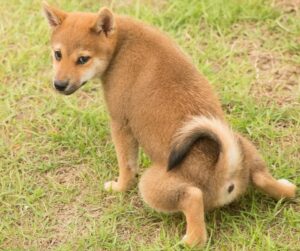 Importance of a Consistent Schedule in House Training
Importance of a Consistent Schedule in House Training
Consistent scheduling plays a crucial role in potty training your puppy. Establishing regular times for feeding and walking helps in creating a routine for your new puppy. It’s a good idea to take your puppy to the designated potty area first thing in the morning, after meals, and before bedtime. Supervision is key, especially in the beginning, to guide your puppy to the right place for elimination. Setting a consistent schedule also involves taking your puppy out in the middle of the night, ensuring they don’t have accidents indoors. By following a structured routine, you can effectively potty train your puppy without confusion.
Feeding Schedule and Its Impact on House Training
A consistent feeding schedule plays a crucial role in the house training process. Here’s how feeding schedule impacts house training and some tips for success:
- Predictable bathroom habits: A regular feeding schedule helps regulate your puppy’s digestive system, leading to more predictable bathroom habits. By feeding your puppy at the same times each day, you can anticipate when they are likely to need a potty break.
- Timing of potty breaks: Plan the frequency of potty breaks around your puppy’s feeding schedule. Puppies usually need to eliminate shortly after eating, so be prepared to take them outside or to their designated potty spot soon after meals.
- Avoiding accidents: Consistent feeding times help prevent accidents indoors. When you establish a regular feeding schedule, your puppy’s digestive system becomes more regular, reducing the likelihood of unexpected accidents in the house.
- Maintain consistency: Stick to the established feeding schedule as closely as possible. Avoid feeding your puppy an excessive amount of food at once, as this can lead to a more frequent need to eliminate.
By implementing a consistent feeding schedule rather than leaving food available all the time, you can establish regular bathroom habits for your puppy, making the house training process more efficient and effective. Puppies under 6 months of age typically do well with 3-4 daily meals, depending on breed and size.
Sleep Schedule and Its Role in House Training
Establishing a sleep schedule for your puppy is essential for successful house training, especially during the night. Here’s how the sleep schedule impacts house training and some tips to help you and your puppy get a good night’s sleep:
- Frequent potty breaks: Puppies have smaller bladders and may need to eliminate during the night. Establish a routine of taking your puppy out for a potty break right before bedtime and first thing in the morning.
- Middle of the night potty breaks: For young puppies, plan for middle-of-the-night potty breaks. Set an alarm to wake up and take your puppy outside to their designated potty spot. Keep the interaction quiet and calm to signal that it’s still time for rest, not playtime.
- Create a comfortable sleeping environment: Provide a cozy crate or bed for your puppy to sleep in. Make sure the area is draft-free, quiet, and free of distractions to promote a peaceful night’s sleep.
- Consistency is key: Maintain a consistent sleep schedule for your puppy, even on weekends or days off. This helps regulate their internal clock and will establish a routine that supports good bathroom habits.
By establishing a regular sleep schedule and incorporating potty breaks, you can help your puppy develop good nighttime bladder control and minimize accidents during the night.
Night Time House Training of Puppies
Setting up a nighttime routine is crucial for successful potty training. Supervision during the first weeks your puppy is home is key. Use a crate, puppy litter box, or puppy pads, or create a safe space with a baby gate. Take your puppy out in the middle of the night. Accidents may happen – be patient. Understanding your puppy’s digestive system is essential. Regular times for bathroom breaks even during night time hours are a good idea. Utilize a leash to guide your puppy to the right place.
Setting Up a Night Routine for Your Puppy
Setting up a night routine is important for successful house training and ensuring a good night’s sleep for both you and your puppy. Here’s a step-by-step guide to creating a night routine:
- Establish a consistent bedtime: Determine a regular time each night for your puppy to go to bed. This helps regulate their sleep schedule and reduces the likelihood of middle-of-the-night potty breaks.
- Provide a final potty break: Before your puppy goes to sleep, take them outside or to their designated potty spot for a final potty break. This helps ensure they have emptied their bladder and reduces the need for a middle-of-the-night potty break.
- Create a calm environment: Make the sleeping area quiet, cozy, and comfortable. Use a crate or a designated space where your puppy feels safe and secure. Consider using a comforting blanket or a soft toy to provide a sense of security.
- Be consistent: Stick to the established night routine, even on weekends or during vacations. Consistency is key to reinforcing good nighttime habits and preventing accidents.
- Handle middle-of-the-night potty breaks appropriately: If your puppy wakes up and needs to go potty in the middle of the night, keep the interaction calm and quiet. Avoid playtime or excessive stimulation, as this may confuse your puppy about the purpose of the nightly outing.
By establishing a night routine for your puppy, you can promote a peaceful night’s sleep and minimize the chance of accidents during the night.
Handling Puppy Accidents at Night
Dealing with puppy accidents at night can be frustrating, but it’s important to handle them calmly and effectively. Here are some tips for handling puppy accidents at night:
- Stay calm and clean up promptly: It’s natural to feel frustrated or disappointed when your puppy has an accident, especially at night. However, it’s important to remain calm and avoid scolding or punishing your puppy. Clean up the accident promptly using an enzymatic cleaner to remove any odor and discourage your puppy from repeating the behavior in the same spot.
- Reassure your puppy: After cleaning up the accident, reassure your puppy and let them know everything is alright. Speak to them in a soothing voice and offer comfort. This helps reduce any anxiety or stress your puppy may feel and strengthens the bond between you.
- Adjust the routine if needed: If you notice a pattern of accidents at night, consider adjusting the night routine. Evaluate the timing of the last potty break before bedtime and consider adding an additional middle-of-the-night potty break if necessary.
- Consistency is key: Maintaining a consistent night routine is crucial for helping your puppy establish good nighttime bathroom habits. Stick to the routine, even during accidents, to reinforce the idea of the night routine and prevent further mishaps.
Handling puppy accidents at night requires consistency, patience, and understanding. By staying calm, reinforcing the nightly routine, and making necessary adjustments, you can help your puppy learn and prevent accidents in the future.
The Process of House Training a Puppy – Step by Step Guide
Understanding the house training process is crucial when potty training your puppy. House training may seem like a daunting task, but breaking it down into a step-by-step process can make it more manageable. Here’s a breakdown of the house training process:
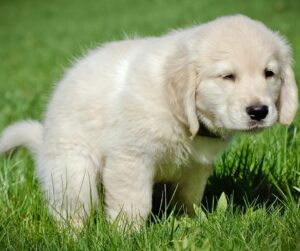
- Establish a routine: Set a consistent schedule for feeding, potty breaks, playtime, and crate time. Consistency is key to reinforcing good bathroom habits.
- Recognize your puppy’s cues: Observe your puppy’s behavior to identify signs that they need to go potty, such as sniffing the ground, circling, or restlessness. Being able to recognize these cues will help you anticipate your puppy’s needs.
- Take them to the right spot: When you notice your puppy exhibiting potty behavior, immediately take them to their designated potty spot, whether it’s outside or a papered area.
- Use positive reinforcement: When your puppy eliminates in the right spot, provide immediate praise, treats, and positive reinforcement. This helps your puppy understand that going potty in the right place is desirable behavior.
- Supervise and limit freedom: When your puppy is not in the crate, supervise closely or restrict their access to a confined area using baby gates or a playpen. This helps prevent accidents and allows for supervision during the house training process.
- Clean up accidents thoroughly: If accidents happen, clean them up promptly using an enzymatic cleaner to eliminate any odor and prevent repeat accidents in the same spot.
- Be patient and consistent: House training takes time, so be patient and consistent with the training process. Consistency in the routine, positive reinforcement, and supervision are important to successfully house training your puppy.
Understanding the house training process is the first step to effective potty training. By following these steps and remaining consistent, you can help your puppy develop good bathroom habits.
Mastering the House Training Steps
Mastering the house training steps comes with time, consistency and patience. Here are some key points to keep in mind:
- Start with crate training: Crate training aids in house training by providing a safe space for your puppy. Start by crate training and gradually increase your puppy’s freedom indoors, always under supervision.
- Set up a designated potty area: Whether it’s a specific spot outside or a papered area indoors, create a designated potty area for your puppy. This helps them associate a specific place with bathroom breaks.
- Supervise and limit freedom: When your puppy is not in the crate, keep a close eye on them or restrict their access to a confined area. Supervision allows you to spot potential potty behavior and intervene if necessary.
- Use a consistent command: Introduce a consistent command or cue, such as “go potty,” when taking your puppy to their designated potty area. This helps them associate the command with the act of eliminating and reinforces good bathroom habits.
- Monitor progress and adjust training: Observe your puppy’s progress and adjust the training as needed. If accidents happen, revisit the routine, reinforce consistency, and consider whether the puppy needs more time to grasp the concept of house training.
By mastering the house training steps and ensuring proper supervision, you can help your puppy develop good bathroom habits and set them up for a lifetime of successful potty training.
Duration of House Training a Puppy
House training a puppy can vary greatly depending on factors such as the puppy’s age, breed, and consistency in training efforts. The duration of house training is also influenced by a range of factors such as breed and size, puppy’s age when training begins, and the method used. Smaller breeds may take longer to train compared to larger breeds. Typically, house training a puppy can take anywhere from a few weeks to several months. Patience and persistence are key during this process as accidents are normal. Understanding your puppy’s needs and behavior plays a crucial role in the successful duration of house training.
Factors Influencing the Duration of House Training
Here are some of the factors that can influence the length of time it takes to successfully house train a puppy:
- Breed: Different breeds may have different temperaments and learning abilities, which can impact the speed of house training. Some breeds may catch on quickly, while others may take a bit longer.
- Puppy’s age: Generally, puppies can be successfully house trained between 12 to 16 weeks of age. However, younger puppies may require more time and consistency to grasp the concepts of house training.
- Bladder control: Bladder control plays a significant role in house training. Puppies have smaller bladders and need more frequent bathroom breaks. As they grow, bladder capacity increases, making it easier for them to hold their urine for longer periods.
- Consistency and training methods: Consistency in the training methods and schedule can significantly impact the duration of house training. Using positive reinforcement, establishing a routine, and avoiding punishment or scolding leads to faster and more effective training.
- Previous living environment: Puppies from a reputable breeder or those who were previously house trained may adjust more quickly to a potty routine in a new home. Puppies from different living environments, such as puppy mills or shelters, or older puppies that were never house trained may require additional time and patience to establish good bathroom habits.
It’s important to remember that the duration of house training may vary for each puppy. Some puppies may catch on quickly and become reliably house trained within a few weeks, while others may take a bit longer. Patience, consistency, and positive reinforcement are crucial during the house training process.
Patience and Persistence in House Training
Patience and persistence are essential qualities when it comes to house training a puppy. Here’s why these qualities are crucial for successful house training:
- Building trust and confidence: Patience helps build a strong bond of trust between you and your puppy. It takes time for puppies to understand the expectations of house training, and patient guidance reinforces their confidence and willingness to learn.
- Consistency: Consistency is key to effective house training. Having patience and being persistent with the training routine, regular potty breaks, and positive reinforcement methods allows your puppy to develop a consistent bathroom routine and reinforces good habits.
- Positive reinforcement: Patience and persistence go hand in hand with positive reinforcement. Consistently rewarding your puppy for eliminating in the right spot encourages them to repeat the behavior. By providing praise, treats, or playtime, you reinforce the idea that potty training is a positive experience.
House training a puppy can sometimes be challenging, but with patience and persistence, you can overcome the obstacles and guide your puppy toward success.
House Training for Older Dogs
House training an older dog requires a slightly different approach than training a puppy. There are pros and cons to house training an older dog versus a puppy. Here are the key differences to consider:
- Established behaviors: Older dogs may have already developed bathroom habits, making it necessary to overcome any existing patterns. It may require more patience and consistency to undo old habits and establish new ones.
- Adaptability: Puppies generally adapt to new routines more easily than older dogs. Adult dogs may take longer to adjust to new training methods and schedules, requiring more time, patience, and positive reinforcement.
- Attention span: Puppies have a shorter attention span compared to older dogs. Training sessions with older dogs can usually be longer in duration, sometimes allowing for progress more quickly. Older dogs also generally have full control over bladder and bowels.
- Previous training and experience: An older dog may have had previous training or exposure to house training, which can be helpful. Building on existing potty training experience can make the process smoother.
- Individual temperament: Every dog, regardless of age, has their own unique temperament and learning style. Try to tailor the training approach to your dog’s specific needs, whether they require more positive reinforcement, additional supervision, or a slower training pace.
When toilet training an older dog, it’s important to be patient, flexible, and understanding of their individual needs. Consistency, positive reinforcement, and a calm training environment are key to successful toilet training.
Tips to Toilet Train an Older Dog
Toilet training an older dog may require some extra time and effort, but with the right approach, it can be accomplished successfully. Here are some tips to help you toilet train an older dog:
- Establish a regular bathroom schedule: Set a consistent schedule for bathroom breaks, making sure to take your dog outside or to their designated potty spot at regular intervals throughout the day. Consistency reinforces good bathroom habits.
- Use positive reinforcement: Positive reinforcement, such as praise, treats, or playtime, can be a powerful tool in toilet training. Reward your dog immediately after they eliminate in the right spot, reinforcing the behavior and motivating them to repeat it.
- Monitor behavior and offer supervision: Keep a close eye on your dog’s behavior for signs of needing to go potty, such as sniffing, circling, or restlessness. When you notice these cues, immediately take your dog outside or to their designated potty area.
- Be patient and stay positive: Older dogs may take longer to adjust to new routines and change old habits. Patience, consistency, and a positive attitude are crucial during the toilet training process. Avoid punishment or negative reinforcement, as this can hinder their progress.
- Create a designated potty area: Designate a specific spot outside or a papered area indoors for your older dog to eliminate. Consistently taking them to the same spot helps reinforce good bathroom habits.
- Seek professional guidance if needed: If you encounter difficulties or struggle to toilet train your older dog, consider seeking guidance from a veterinarian or a professional dog trainer. They can provide valuable insights, tips, and techniques tailored to your dog’s specific needs.
Toilet training an older dog may take time, patience, and consistency, but with positive reinforcement and a supportive training approach, your dog can learn new bathroom habits.
Recognizing Signs That Your Puppy Needs to Go
Paying attention to subtle cues like restlessness or sniffing around can indicate your puppy needs to go outside. It is important to recognize any sudden behavior changes as a sign for a bathroom break. Understanding your puppy’s unique signals, whether it’s scratching at the door or circling, is key to successful potty training. Additionally, keeping an eye out for pacing or whining can signal the need for a trip to the designated potty area. Being observant of your puppy’s behavior helps in avoiding accidents inside the house effectively.
Understanding Your Puppy’s Body Language
Understanding your puppy’s body language can help you identify when it’s time for a potty break. Here are some common signals to watch for:
- Sniffing the ground: Your puppy may start to sniff the floor, particularly in a circular motion, as they search for a suitable spot to eliminate.
- Circling or restless behavior: Puppies often exhibit circling behavior or become restless when they need to go potty. This behavior is a clear indication of their need to eliminate.
- Whining or scratching at the door: Some puppies may whine, scratch, or paw at the door, signaling their need to go outside for a potty break.
- Sudden excitement: Puppies may become suddenly excited or hyperactive when they need to go potty. This change in behavior can be a reliable indicator of their bathroom needs.
- Squatting or crouching: If your puppy starts to squat or crouch, they are probably about to eliminate.
By understanding body language and recognizing these signals, you can proactively respond to your puppy’s needs and prevent accidents in the house. Promptly taking your puppy to their designated potty spot when you notice these signs will reinforce good bathroom habits.
Setting Up a Signal for Your Puppy to Communicate
Setting up a communication signal with your puppy is a helpful way for them to indicate when they need to go potty. Here are some steps to establish a communication signal:
- Choose a specific signal: Decide on a specific signal, such as a bell hung near the door, a bark, or a specific command or cue, which your puppy can use to communicate their potty needs.
- Introduce the signal during potty breaks: Every time you take your puppy outside for a potty break, encourage them to touch the bell, bark, or respond to a cue before opening the door.
- Reinforce the signal with positive reinforcement: When your puppy uses the communication signal, immediately open the door and take them to their potty spot. Praise, reward, or offer a treat to reinforce the idea of using the signal to indicate potty time.
- Consistency is key: Be consistent in using the communication signal every time you take your puppy outside for a potty break. Over time, your puppy will associate the signal with the need to go potty.
By establishing a communication signal, such as a bell, command, or bark, you can teach your puppy to effectively communicate their bathroom needs, making the house training process smoother and more efficient.
Handling Setbacks in House Training a Puppy
Dealing with setbacks in potty training your puppy requires patience and consistency. Review your training routine to pinpoint triggers for setbacks. Watch your puppy’s behavior closely to promptly address any challenges that arise. Adapt your methods based on your puppy’s progress and setbacks. If persistent issues arise, consider seeking advice from a professional to navigate through any obstacles effectively. Remember, setbacks are a natural part of the learning process as your new puppy adjusts to their surroundings and training regimen.
Is it Normal for a Puppy to Have Toilet Training Regression?
Experiencing toilet training regression in puppies is common and can be triggered by changes in routine, environment, or health. Stay consistent with positive reinforcement during these periods and consult a veterinarian if regression persists abnormally.
Conclusion
In conclusion, house training your puppy requires consistency, patience, and understanding. Avoiding common mistakes such as punishing accidents, neglecting a consistent schedule, and not recognizing your puppy’s signals can make the process more challenging. Remember that each puppy is unique, and their developmental stage plays a crucial role in house training. By following the appropriate techniques and creating a structured routine, you can successfully train your puppy to eliminate in the designated area. It is also important to be prepared for setbacks and understand that regression can be normal during the training process. Need help potty training? Contact us! With love, care, and positive reinforcement, you can create a happy and well-trained furry companion.
